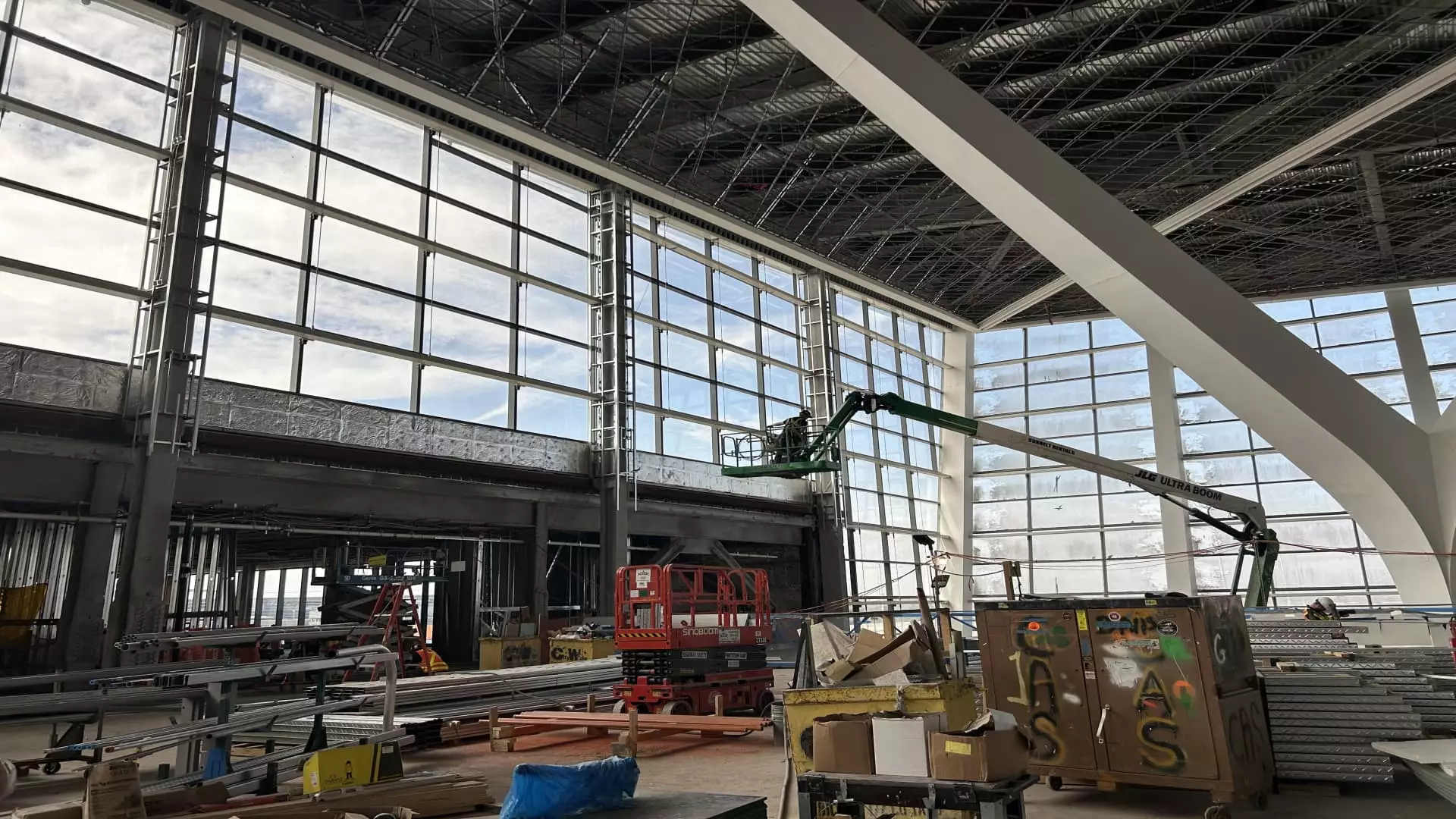The redevelopment of John F. Kennedy International Airport’s Terminal 1 is not merely a construction project; it is a testament to the relentless pursuit of modernization that characterizes contemporary infrastructure initiatives. With an estimated investment of $9.5 billion, the new terminal aims to redefine international travel at one of America’s busiest airports. While the aspiration to create a state-of-the-art facility is laudable, it also invites scrutiny over the true value and long-term viability of such a colossal expenditure. This project beckons us to ask: does it serve the immediate needs of travelers and the broader regional economy, or does it risk becoming a white elephant burdened with cost overruns and strategic miscalculations?
The plan to replace the aging Terminal 1, which has served passengers since 1998, is ambitious. The new structure, projected to be roughly the size of two LaGuardia terminals combined, reflects a conscious effort to channel the airport’s potential into a sleek, efficiently operated international hub. But the question remains: is this investment justified, especially considering the scale and complexity of the project? Given that airports are critical nodes in global commerce, the answer must weigh the benefits of advanced design, increased capacity, and improved comfort against the potential pitfalls of prolonged construction timelines, escalating costs, and changing travel dynamics.
Design and Efficiency: Innovation at What Cost?
The architectural vision for Terminal 1 promises a light-filled, butterfly-inspired space that prioritizes passenger experience. According to officials, the immersive design—featuring soaring windows and level-equipped customs and security areas—aims to eradicate foggy bottlenecks and congestion. Yet, sophistication in design often disguises a fundamental risk: overestimating the importance of aesthetics over function. While a well-lit, spacious terminal can elevate the traveling experience, it may come at the expense of operational simplicity and cost efficiency. Large glass facades, for instance, require elaborate maintenance and potentially introduce thermal management challenges that inflate operational costs.
Furthermore, the decision to house all departure, security, and customs functions on a single level appears sensible, aiming for seamless passenger flow. But this approach assumes that technological and logistical systems will flawlessly operate without hiccups—an optimistic belief. Airport infrastructure is inherently vulnerable to delays, technical failures, and unforeseen complications. The risks associated with such a grand, centralized design must be carefully managed to prevent turning what seems to be an innovative solution into an operational nightmare.
Economic and Political Implications: A Middle Ground or a Mismatch?
Center-right wing perspectives tend to favor investments that promote economic growth while advocating for fiscal responsibility. The JFK Terminal 1 project fits into this paradigm, purportedly offering a boost to regional commerce, improved global connectivity, and an enhanced passenger experience to attract international airlines and travelers. Yet, critics may argue that such grand projects often spiral into budget overruns—especially with the ambitious scope and unanticipated delays that typically accompany large infrastructure endeavors.
In addition, the interplay between federal, state, and local interests complicates the project’s prospects. The $19 billion overhaul of JFK and subsequent airport upgrades stretch public funds, which might otherwise be directed toward other priorities like education or healthcare. While supporters tout the long-term economic benefits—more jobs, increased tourism, gateway prestige— skeptics could question whether these benefits will materialize proportionally to the price tag. Moreover, in an era of fluctuating global travel demand, especially post-pandemic, the risk of overcapacity looms large. Investing heavily in a facility that might be underutilized or rendered obsolete by shifting trends is a gamble that conservative fiscal minds should scrutinize critically.
Strategic Positioning in a Changing Aviation Landscape
The timing of Terminal 1’s completion, projected for mid-2026, is strategically chosen to coincide with the FIFA World Cup, a move that underscores the project’s goal to catalyze international tourism. While this timing appears shrewd, it also exposes the project to external risks: geopolitical fluctuations, airline industry shifts, or global crises could undermine the expected congestion influx. Moreover, the emphasis on attracting high-profile international airlines and serving long-haul flights reflects an outdated assumption that large-scale infrastructure alone can guarantee airline loyalty and passenger throughput.
In a landscape increasingly dominated by new travel modalities—ultrafast digital connections, regional alliances, and evolving airline networks—JFK’s mammoth terminal risks becoming an albatross if it does not adapt swiftly. It is imperative to question whether the design’s focus on current airline partners and long-term passenger capacity disregards potential disruptions or the rise of alternative airports and transit hubs. This myopic view could lead to an underutilized, expensive facility that fails to deliver the anticipated economic or operational dividends.
From Vision to Reality: The Cost of Overambition
Despite the allure of a groundbreaking international gateway, history suggests that mega projects like JFK’s Terminal 1 often succumb to unanticipated delays, budget overruns, and bureaucratic inertia. The backdrop of an $8 billion LaGuardia upgrade pales in comparison, yet it also demonstrates that high-value, high-quality infrastructure is achievable without overreach. The question is whether JFK’s sprawling, butterfly-inspired design can deliver tangible benefits without becoming a symbol of excess.
Critics must ask whether the project has adequately accounted for future growth, technological integration, and adaptability. Is this 600,000-square-foot behemoth a prudent investment, or does it risk obsolescence and underuse? As pressure mounts for projects to demonstrate immediate and measurable returns, the danger lies in prioritizing visual grandeur over sustainable, flexible design that can withstand the tests of time, economic shifts, and evolving security needs.
In essence, JFK’s Terminal 1 embodies the complex tension between visionary infrastructure development and pragmatic fiscal stewardship. While it promises to elevate the regional and national profile of New York’s air travel, it also serves as a stark reminder that even the most ambitious projects require cautious planning, sober budgeting, and a firm grasp of the turbulent future that airports must navigate.

